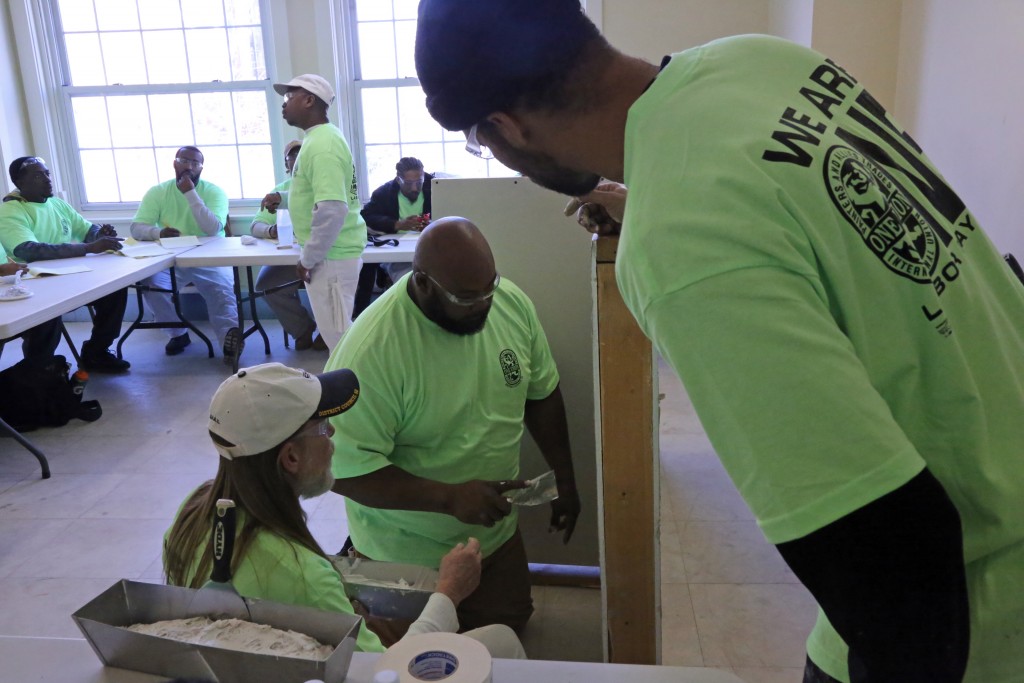
By TIM ROWDEN
Editor
St. Louis – Mayor Francis Slay joined leaders of the International Union of Painters and Allied Trades (IUPAT) and Demetrious Johnson of the Demetrious Johnson/Eddie Mae Binion Workforce Center in St. Louis last week to celebrate the launch of a 14-week course that will train local minority candidates for a successful career in construction.
The goal of the partnership is to create a pool of well-trained and motivated candidates for the workforce.
IUPAT District Council 58 will teach craft skills and soft skills to the 17 young men and women selected for the training. Participants who successfully complete the course will receive assistance in job placement with local union and non-union contractors.
The students will not leave the program ready to be union painters, but will be ready to enter the Painters’ three-year apprenticeship program and/or receive job placement assistance. In the meantime, they will have developed the discipline, reliability and commitment needed to get hired and hold onto a job.
BRIDGING THE GAP
“This initiative creates a pathway to a successful career and merges the gap between people who want to work and those who need skilled workers,” Mayor Slay said.
“It builds our minority workforce while setting our young residents in a positive direction to be able to provide for themselves and their families.”
RELIABILITY AND DISCIPLINE

Rich Lucks, director of business development for District Council 58, said the students start each day at 7 a.m. and work until 3:30 p.m. – just like on a regular jobsite. They are responsible for getting themselves to work and putting in a full day, and have work to do at the Workforce Center, including drywall finishing and painting hallways and classrooms.
“This isn’t really about a skill set,” Lucks said. “This is about reliability and discipline.”
Those who successfully complete the program will have proven themselves to be the committed, dedicated, disciplined and hard working – in other words, good employees.
“We’re going to give them every resource we have to have the ability to succeed,” Lucks said.
That includes helping participants who need it complete their GED or earn their high school diploma and getting their driver’s license and transportation.
Candidates go through a rigorous screening process before being accepted into the program.
Lucks said the class at the Workforce Center was culled from a pool of 59 applicants down to 14 with the most impressive backgrounds and greatest likelihood of succeeding.
The program is not new or a response to the recent unrest in Ferguson.
‘REAL ECONOMICS’
Lucks said the program was initially launched in 2010 with similar training curricula in East St. Louis and Decatur, IL.
IUPAT sponsors similar joint efforts throughout North America as a part of its Community Organizing for Real Economics program, or CORE, which creates partnerships between the Painters and Allied Trades and local community groups for the benefit of the communities.
‘INDUSTRIAL ATHLETES’
Johnson is a native St. Louisan who grew up in the Darst-Webbe Housing Project and starred at McKinley High and the University of Missouri before he had a five-year NFL career that included stints with Detroit and Miami. He founded the Demetrious Johnson Charitable Foundation in 1992 to “help better the lives of inner-city youth by providing mentoring, financial, vocational/tutorial and scholastic assistance programs.”
Johnson called the students in the program “industrial athletes.”
“An athlete must be disciplined and committed to putting in the hard work,” Johnson said. “The same can be said of a good employee.”

